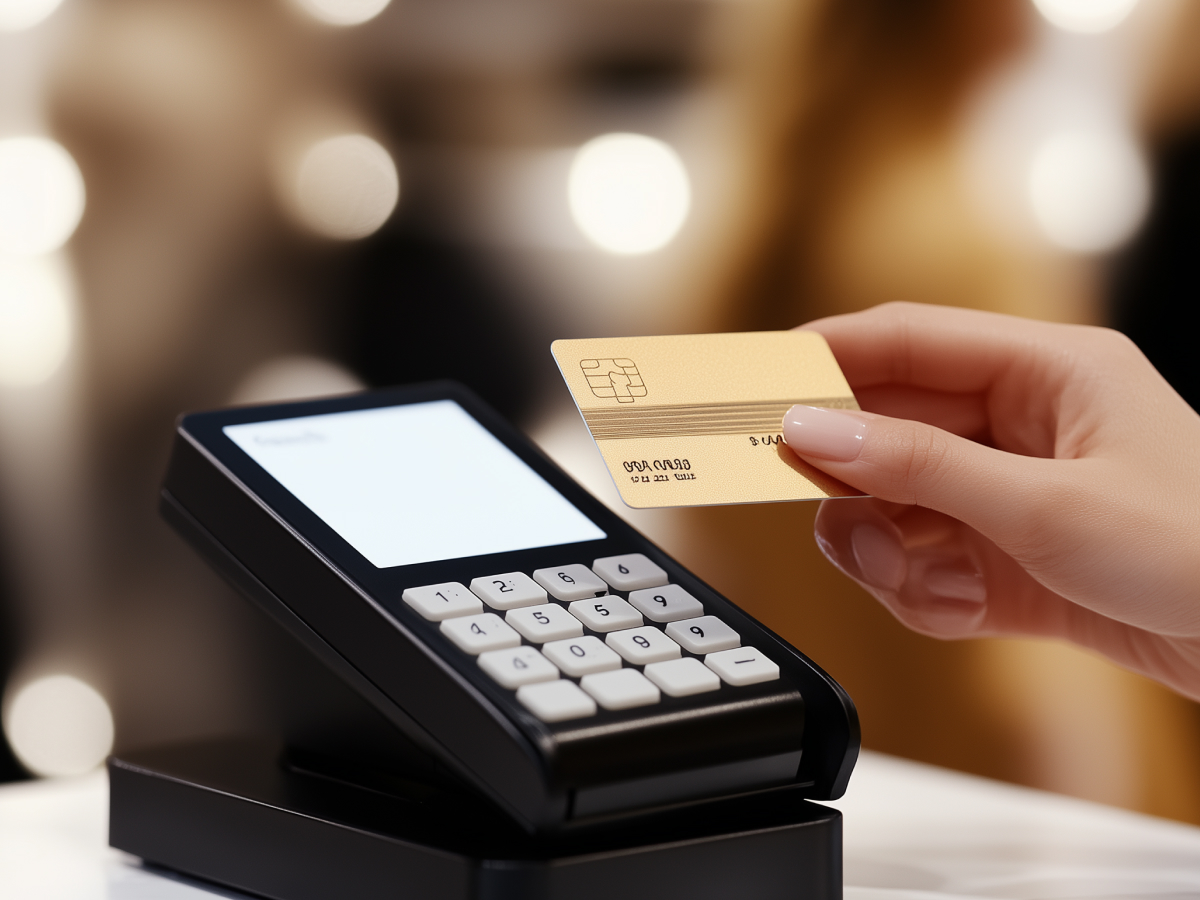Customers prioritize payment convenience in-store and online
Convenience in payments means removing friction entirely. Whether swiping a card at a grocery store or checking out online with a digital wallet, customers seek payment methods that feel intuitive and simple. Payment systems that work in the background, almost invisibly, tend to win.
Debit cards are the go-to option for in-store transactions because they’re simple and predictable. Customers don’t need to carry cash or worry about running up a credit card bill. It’s a straightforward exchange: money comes out of their checking account immediately. For smaller, everyday purchases like groceries, this simplicity resonates, particularly with cost-conscious consumers.
Online, it changes. Digital wallets like Apple Pay or Google Pay cater to customers who value speed and security. These wallets eliminate the need for entering card details every time you buy something, while encryption and tokenization keep sensitive information safe. They also centralize payment options, so customers can switch between cards effortlessly, which feels modern and efficient.
For businesses, this shift is an opportunity. Imagine a world where checking out is as simple as tapping a button, no friction, no frustration. Companies that integrate QR codes, NFC technology, and reward systems into their payment ecosystems will lead this transformation. The goal is to make the payment process so effortless that it almost disappears, leaving the customer with only a sense of satisfaction.
Debit cards appeal to cost-conscious and budget-focused consumers
Debit cards are a practical tool, particularly for consumers who want control over their finances. They don’t come with interest rates, annual fees, or the temptation to overspend like credit cards often do. Instead, they let people pay as they go, staying within the limits of what they have, no surprises, no financial stress.
This simplicity is why debit cards dominate for smaller purchases like groceries, coffee runs, or a quick bite. It’s about predictability and transparency. Customers know exactly where they stand financially because every payment reflects instantly in their account. For many, especially those managing tight budgets, that level of clarity is invaluable.
Interestingly, debit cards are especially popular among lower-income consumers. Research shows they’re used almost twice as often by individuals in lower income brackets compared to their higher-income counterparts. The appeal here is clear: no debt to worry about and no hidden costs. For businesses, recognizing this demographic nuance is key. Offering incentives for debit card use or tailoring marketing to emphasize their cost efficiency can strengthen engagement with this audience.
However, there’s a tradeoff. Debit cards don’t offer rewards or credit-building opportunities like credit cards do. For some, that’s a drawback. But for those who prioritize simplicity and staying debt-free, the benefits far outweigh the costs. The challenge for businesses is balancing these preferences and making sure payment options align with customer needs.
Digital wallets for convenience and security
Digital wallets are changing how we think about payments. They take the convenience of traditional cards and elevate it with technology. Digital wallets are about removing barriers, no more fumbling for a wallet, typing in card numbers, or worrying about stolen details. Everything you need is stored securely on your device, ready to go with a tap or a click.
“Encryption and tokenization make sure that even if someone intercepts your payment information, it’s virtually useless to them. “
But there’s more. Digital wallets let users consolidate multiple payment options into one place, which is particularly handy for frequent online shoppers. If a customer wants to pay with a rewards card today and a debit card tomorrow, it’s effortless. Add features like near-field communication (NFC) for contactless payments or QR code scanning, and you’ve got a system that works everywhere from physical stores to online marketplaces.
For businesses, the message is clear: integrate or get left behind. Customers expect these technologies, and those that lag in adopting them risk losing market share. The future belongs to companies that make digital wallets the easiest option. Imagine the checkout process reduced to a single step, no friction, no delays, just efficiency.
Key takeaways
- Convenience drives loyalty: Customers value payment options that minimize effort and maximize efficiency. Debit cards are preferred for in-store transactions due to simplicity and cost control, while digital wallets dominate online for speed and security.
- Demographic nuances: Lower-income consumers rely on debit cards nearly twice as often as higher-income groups, drawn to their pay-as-you-go nature. Businesses targeting this segment should highlight affordability and simplicity.
- Digital wallet adoption: Features like encryption, tokenization, and NFC make digital wallets a secure and efficient choice for online and mobile transactions. Leaders should prioritize integrating digital wallet options and educating consumers on their benefits to boost adoption.
- Business opportunities: Simplifying checkout processes with technologies like QR codes and NFC and offering rewards for digital payments can improve customer experience and loyalty, bringing a competitive edge in evolving markets.





